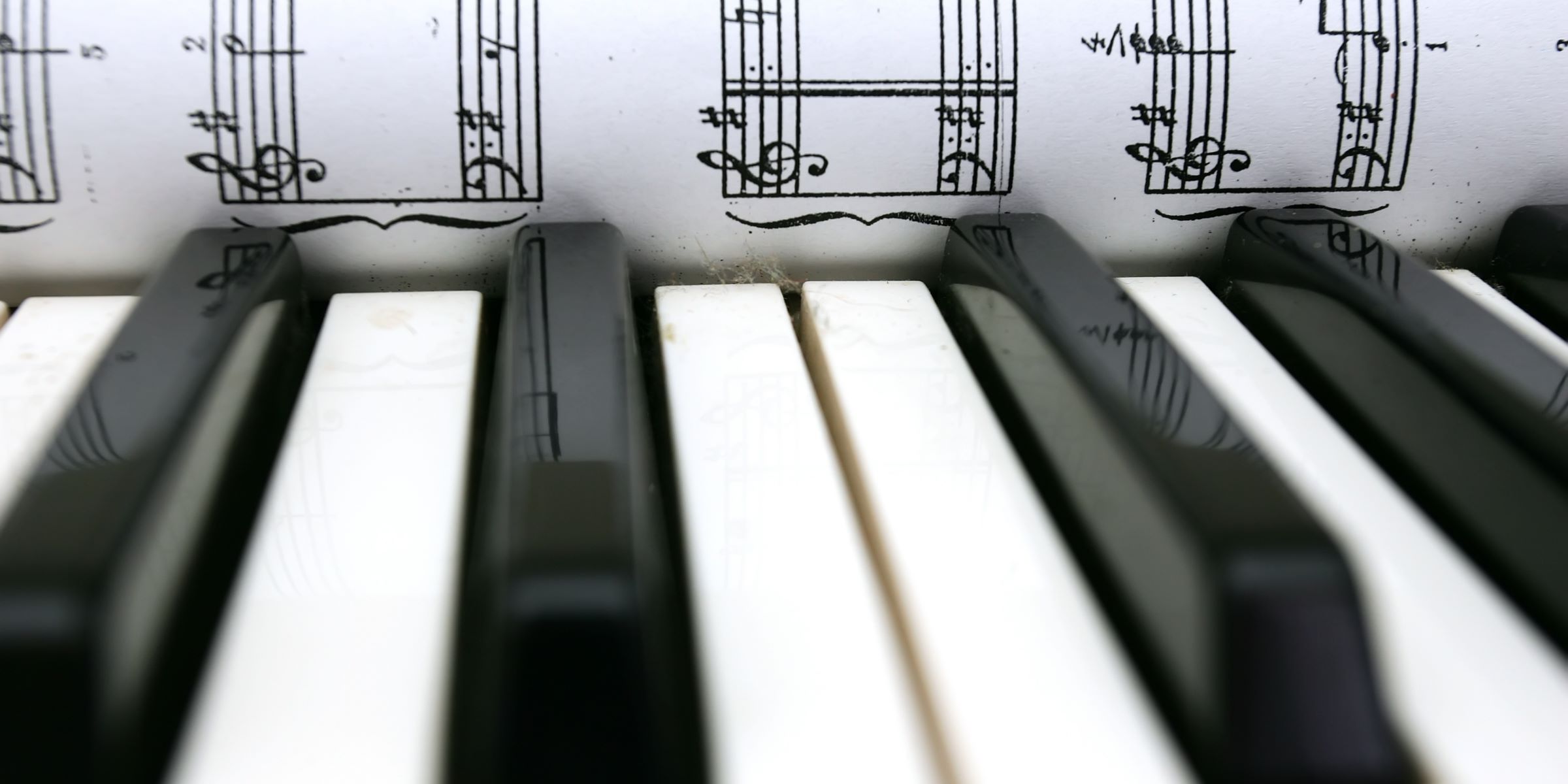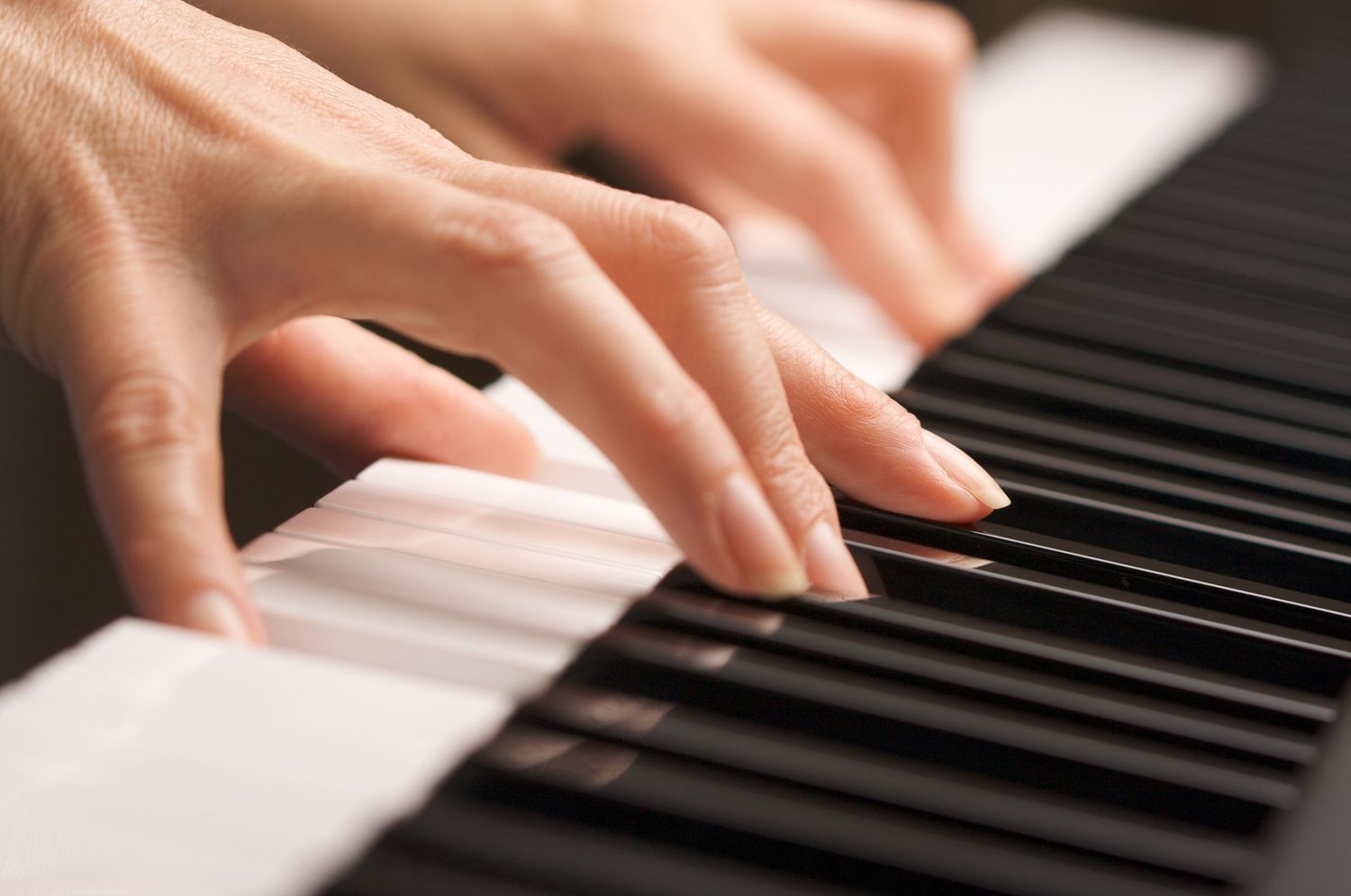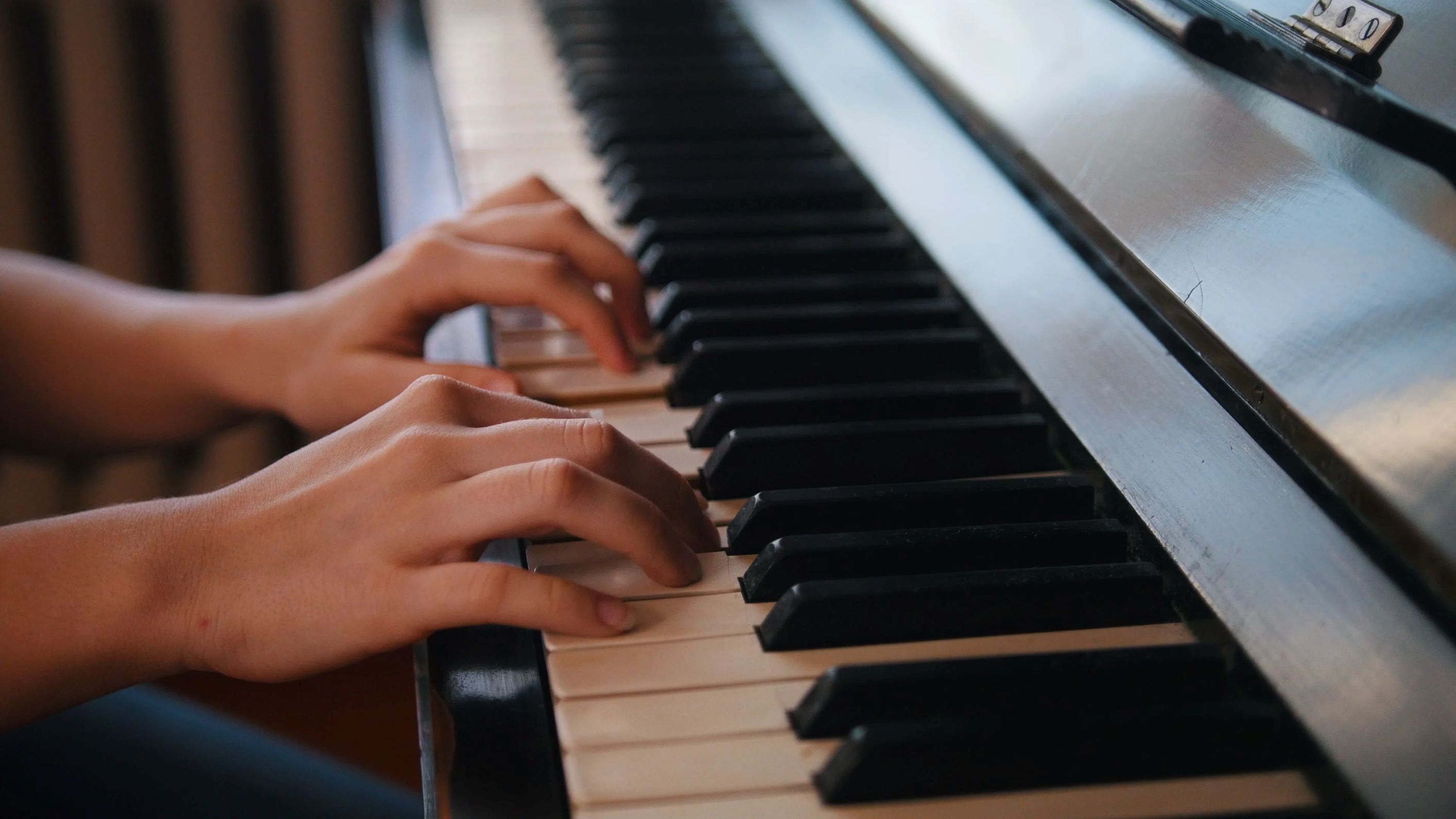Home>Instruments>Piano>How To Learn The Piano Chords


Piano
How To Learn The Piano Chords
Published: February 11, 2024
Learn how to play the piano chords with our comprehensive guide. Master the essential techniques and progress your piano skills today. Perfect for beginners and aspiring musicians.
(Many of the links in this article redirect to a specific reviewed product. Your purchase of these products through affiliate links helps to generate commission for AudioLover.com, at no extra cost. Learn more)
Table of Contents
Introduction
Learning to play the piano is a fulfilling endeavor that opens up a world of musical possibilities. Whether you're a complete beginner or have some experience with the piano, understanding piano chords is essential for mastering this versatile instrument. In this article, we will explore the fundamentals of piano chords, from basic major and minor chords to more complex seventh chords and inversions. By the end, you'll have a solid grasp of how to approach and practice piano chords, setting you on the path to becoming a proficient pianist.
Playing chords on the piano involves pressing multiple keys simultaneously to produce a harmonious sound. Chords form the backbone of countless songs across various genres, making them a crucial aspect of piano playing. Understanding how chords are constructed and how they function within different musical contexts is key to unlocking the full potential of the piano.
Throughout this article, we will delve into the theory behind piano chords while providing practical tips to help you internalize and apply this knowledge. Whether you aspire to play classical compositions, jazz standards, pop hits, or your own original music, a solid foundation in piano chords will empower you to express yourself musically with confidence and creativity.
So, let's embark on this enriching journey into the realm of piano chords, where we'll unravel the building blocks of harmony and equip you with the tools to bring beautiful music to life on the ivories. Whether you're drawn to the elegance of classical music or the infectious rhythms of contemporary genres, the principles of piano chords are universal, laying the groundwork for your musical growth and proficiency. Let's dive in and discover the captivating world of piano chords together.
Understanding Piano Chords
Before delving into the intricacies of playing piano chords, it’s essential to grasp the fundamental concept of what a chord is. In music theory, a chord is defined as a group of three or more notes played together to create harmony. These notes are typically derived from a specific scale and are played simultaneously or in a sequence to produce a harmonious sound. Understanding the structure and function of chords is pivotal to becoming proficient in piano playing.
At its core, a chord consists of three primary elements: the root note, the third, and the fifth. The root note serves as the foundation of the chord and determines its overall name and quality. The third note, whether major or minor, defines the chord’s tonality, conveying a sense of brightness or melancholy. The fifth note provides stability and richness to the chord, contributing to its overall sound and character.
When these elements come together, they form the basic structure of a chord, laying the groundwork for more complex variations and extensions. As you progress in your piano journey, you’ll encounter a diverse range of chords, each with its unique sound and emotional resonance. Understanding the theory behind chords will enable you to interpret and play a wide array of musical compositions with confidence and artistry.
Additionally, familiarizing yourself with chord symbols and notations is crucial for reading and interpreting sheet music effectively. Whether you’re learning from a music score or improvising on the fly, the ability to identify and play chords accurately is a valuable skill that empowers you to express musical ideas fluently.
As we continue our exploration of piano chords, we’ll delve deeper into specific chord types and their applications, providing you with the knowledge and insight to navigate the rich tapestry of harmonic possibilities on the piano. By understanding the essence of piano chords, you’ll embark on a transformative musical journey, where the keys of the piano become a gateway to boundless creativity and expression.
Basic Major and Minor Chords
Major and minor chords form the cornerstone of harmonic expression in music, encompassing a wide spectrum of emotions and moods. Understanding the difference between these two fundamental chord types is pivotal for any aspiring pianist.
Major chords, often associated with feelings of brightness and positivity, are constructed using the root, major third, and perfect fifth notes. For example, the C major chord comprises the notes C, E, and G played together, creating a sense of resolution and cheerfulness. Major chords are prevalent in various musical genres, from classical compositions to contemporary pop songs, infusing compositions with a sense of optimism and vitality.
On the other hand, minor chords evoke a more introspective and somber ambiance, characterized by the presence of a minor third interval. The C minor chord, consisting of the notes C, E♭, and G, exemplifies the poignant and melancholic quality inherent in minor chords. These chords are often utilized to convey emotions of longing, introspection, and depth, adding a layer of complexity to musical pieces.
As you acquaint yourself with major and minor chords on the piano, it’s essential to practice transitioning between these chord types fluidly. Developing muscle memory and finger dexterity is crucial for executing chord progressions seamlessly, allowing you to express a wide range of musical emotions with finesse and authenticity.
Whether you’re crafting your own compositions or interpreting beloved melodies, the interplay between major and minor chords forms the bedrock of musical storytelling. Through the nuanced use of major and minor chords, pianists can weave captivating narratives, evoking a myriad of emotions and resonating with audiences on a profound level.
By mastering the art of playing major and minor chords, you’ll unlock the expressive potential of the piano, harnessing the power of harmony to convey the depth and breadth of human experience through music.
Learning Seventh Chords
Seventh chords introduce an additional layer of richness and complexity to the harmonic palette, expanding the expressive possibilities available to pianists. These chords, characterized by the inclusion of a seventh note alongside the root, third, and fifth, offer a captivating blend of tension and resolution, adding depth and sophistication to musical arrangements.
There are several types of seventh chords, each with its unique sonic identity. The dominant seventh chord, for instance, infuses compositions with a sense of urgency and anticipation, often serving as a precursor to resolving to a tonic chord. The major seventh chord, on the other hand, exudes a dreamy and ethereal quality, lending a touch of nostalgia and wistfulness to musical passages. Additionally, the minor seventh chord embodies a soulful and introspective vibe, enriching melodies with a sense of longing and introspection.
As you delve into the realm of seventh chords, it’s essential to familiarize yourself with their distinctive sound and character. Practicing various seventh chord progressions and incorporating them into your repertoire will enhance your ability to convey a wide range of emotions through your piano playing. Additionally, understanding the role of seventh chords in different musical genres, from jazz to contemporary pop, will equip you with the versatility to interpret diverse musical styles with authenticity and flair.
Mastering seventh chords opens up new avenues for musical expression, enabling you to infuse your playing with sophistication and nuance. Whether you’re embellishing a jazz standard with cascading seventh chord arpeggios or adding a touch of allure to a contemporary ballad, the artful use of seventh chords elevates your piano performance to captivating heights.
By embracing the intricacies of seventh chords, you’ll expand your harmonic vocabulary and enrich your musical storytelling, captivating listeners with the evocative interplay of tension and resolution inherent in these enchanting chord structures.
Mastering Inversions
Understanding and mastering inversions is a pivotal aspect of piano chord proficiency, enabling pianists to create smooth transitions and enrich their playing with nuanced harmonic textures. In essence, chord inversions involve rearranging the order of notes within a chord, resulting in a different voicing while retaining the same pitches.
By employing inversions, pianists can achieve seamless chord progressions and create a sense of continuity and fluidity in their playing. Inversions allow for smoother transitions between chords, reducing the need for drastic hand movements and facilitating a more connected and expressive musical delivery.
One of the primary benefits of mastering inversions is the ability to create compelling bass lines within chord progressions. By strategically utilizing inversions, pianists can introduce melodic movement in the lower register, adding depth and momentum to their musical arrangements. This technique is particularly prevalent in genres such as jazz and contemporary pop, where engaging bass lines contribute to the rhythmic drive and melodic intrigue of the music.
Furthermore, inversions offer a means of imbuing piano compositions with a sense of elegance and sophistication. The use of inversions can impart a sense of harmonic variety and color, elevating the overall musical texture and imbuing performances with a heightened sense of artistry.
As you delve into the realm of inversions, it’s essential to practice transitioning between different chord voicings fluidly. Developing finger independence and agility is crucial for executing inversions seamlessly, allowing you to infuse your playing with expressive nuances and captivating harmonic variations.
By mastering inversions, pianists can unlock a world of creative possibilities, enriching their musical interpretations and compositions with the captivating allure of nuanced chord voicings and seamless transitions. Embracing the art of inversions empowers pianists to craft compelling musical narratives, where the interplay of harmonic textures and melodic motifs captivates audiences and resonates deeply with listeners.
Practicing with Common Chord Progressions
Practicing common chord progressions is a foundational aspect of honing your skills as a pianist, providing a framework for understanding the interplay of chords within musical compositions. By familiarizing yourself with prevalent chord progressions, you’ll develop a keen sense of harmonic movement and gain the ability to interpret a diverse array of musical pieces with confidence and fluency.
One ubiquitous chord progression is the I-IV-V-I progression, which forms the basis of countless songs across genres. In the key of C major, this progression comprises the chords C, F, G, and back to C. Mastering this progression equips you with a versatile harmonic foundation, enabling you to navigate through a myriad of musical arrangements with ease.
Additionally, the ii-V-I progression, prevalent in jazz and contemporary music, offers a compelling harmonic journey, incorporating the chords Dm7, G7, and Cmaj7 in the key of C major. Practicing this progression fosters an understanding of harmonic tension and resolution, enriching your musical vocabulary and improvisational prowess.
Furthermore, delving into minor key progressions, such as the i-iv-V-i in the key of A minor, expands your harmonic repertoire, infusing your playing with evocative and introspective tonalities. Exploring minor key progressions enhances your ability to convey a diverse range of emotions through your piano performance, adding depth and complexity to your musical interpretations.
As you practice these common chord progressions, focus on achieving smooth transitions between chords and maintaining a consistent sense of rhythm and timing. Developing a keen ear for harmonic movement and understanding the role of each chord within a progression empowers you to interpret musical compositions authentically and expressively.
Moreover, experimenting with variations and embellishments within these chord progressions fosters creativity and musical exploration, allowing you to imbue familiar progressions with your unique artistic flair. Whether through arpeggiated patterns, rhythmic alterations, or harmonic substitutions, infusing your practice sessions with creativity cultivates a dynamic and engaging approach to mastering common chord progressions.
By immersing yourself in the practice of common chord progressions, you’ll cultivate a strong foundation in harmonic theory and develop the versatility to interpret diverse musical styles with confidence and artistry. Embracing the nuances of these progressions empowers you to craft compelling musical narratives, where the interplay of chords weaves captivating stories and resonates deeply with audiences.
Conclusion
Congratulations on embarking on this enriching journey into the realm of piano chords. Throughout this exploration, we’ve delved into the fundamental concepts and practical applications of piano chords, equipping you with the knowledge and insight to navigate the intricate landscape of harmonic expression on the piano.
Understanding piano chords is not merely a technical pursuit but a gateway to boundless creativity and musical storytelling. By mastering basic major and minor chords, you’ve gained a foundation for expressing a wide range of emotions through your playing, infusing compositions with brightness, melancholy, and everything in between.
Delving into seventh chords has expanded your harmonic palette, allowing you to infuse your playing with tension, resolution, and sophisticated nuances. The artful use of seventh chords adds depth and complexity to your musical interpretations, enriching your performances with captivating allure.
Mastering inversions has empowered you to create seamless transitions and imbue your playing with elegance and sophistication. By embracing the art of inversions, you’ve unlocked a world of creative possibilities, enriching your musical narratives with captivating harmonic textures and nuanced voicings.
Practicing common chord progressions has provided you with a versatile harmonic foundation, enhancing your ability to interpret a diverse array of musical pieces with confidence and fluency. By immersing yourself in these progressions, you’ve cultivated a strong foundation in harmonic theory and developed the versatility to express a wide range of musical styles authentically and expressively.
As you continue your musical journey, remember that the principles of piano chords are universal, transcending genres and styles. Whether you’re drawn to classical elegance, jazz sophistication, or contemporary allure, the mastery of piano chords empowers you to craft compelling musical narratives that resonate deeply with audiences.
Embrace the nuances of piano chords, infuse your playing with creativity and expression, and let the captivating interplay of harmony and melody weave enchanting stories through your music. With dedication, practice, and a deep understanding of piano chords, you’ll embark on a transformative musical odyssey, where the keys of the piano become a canvas for your boundless creativity and artistic expression.











